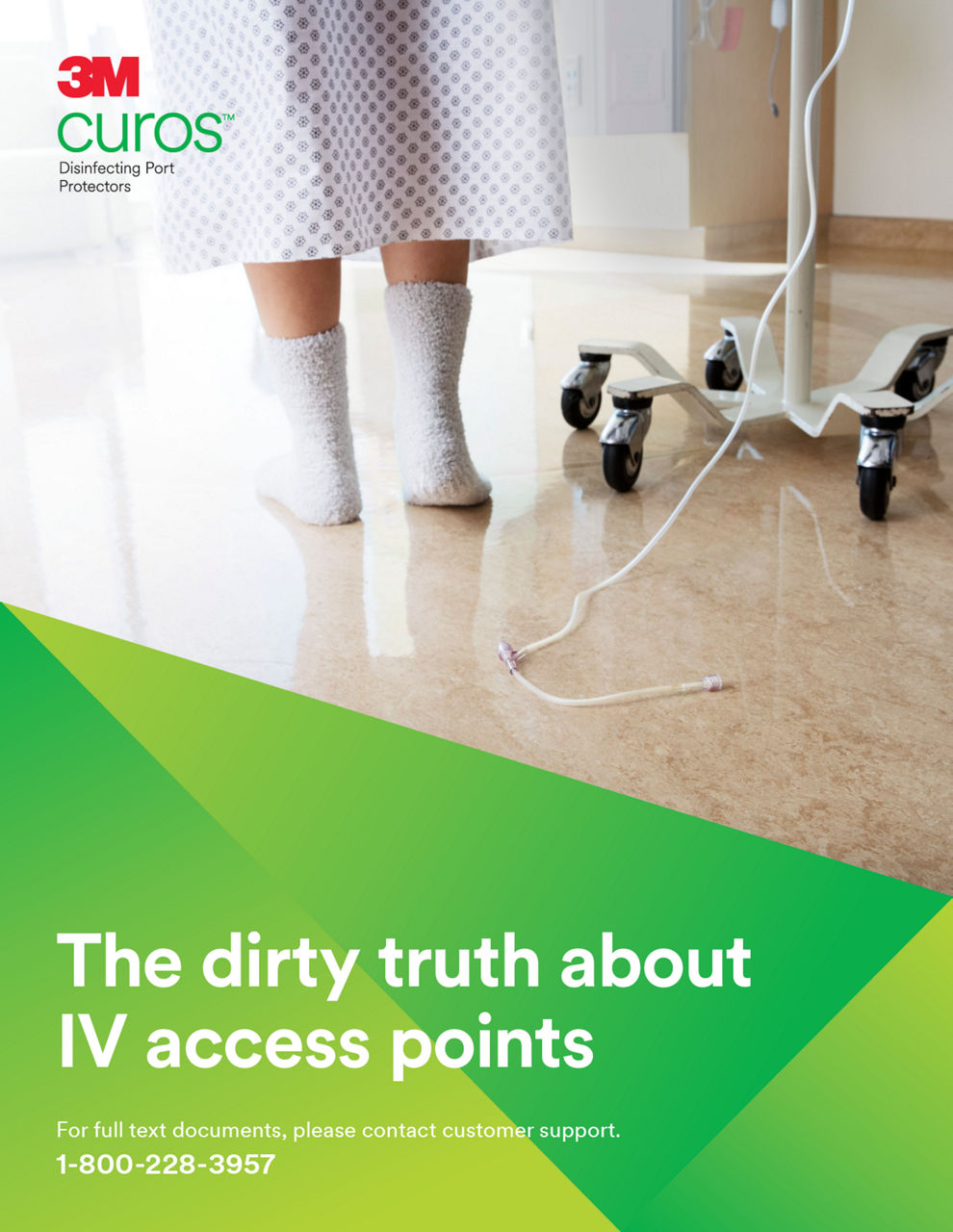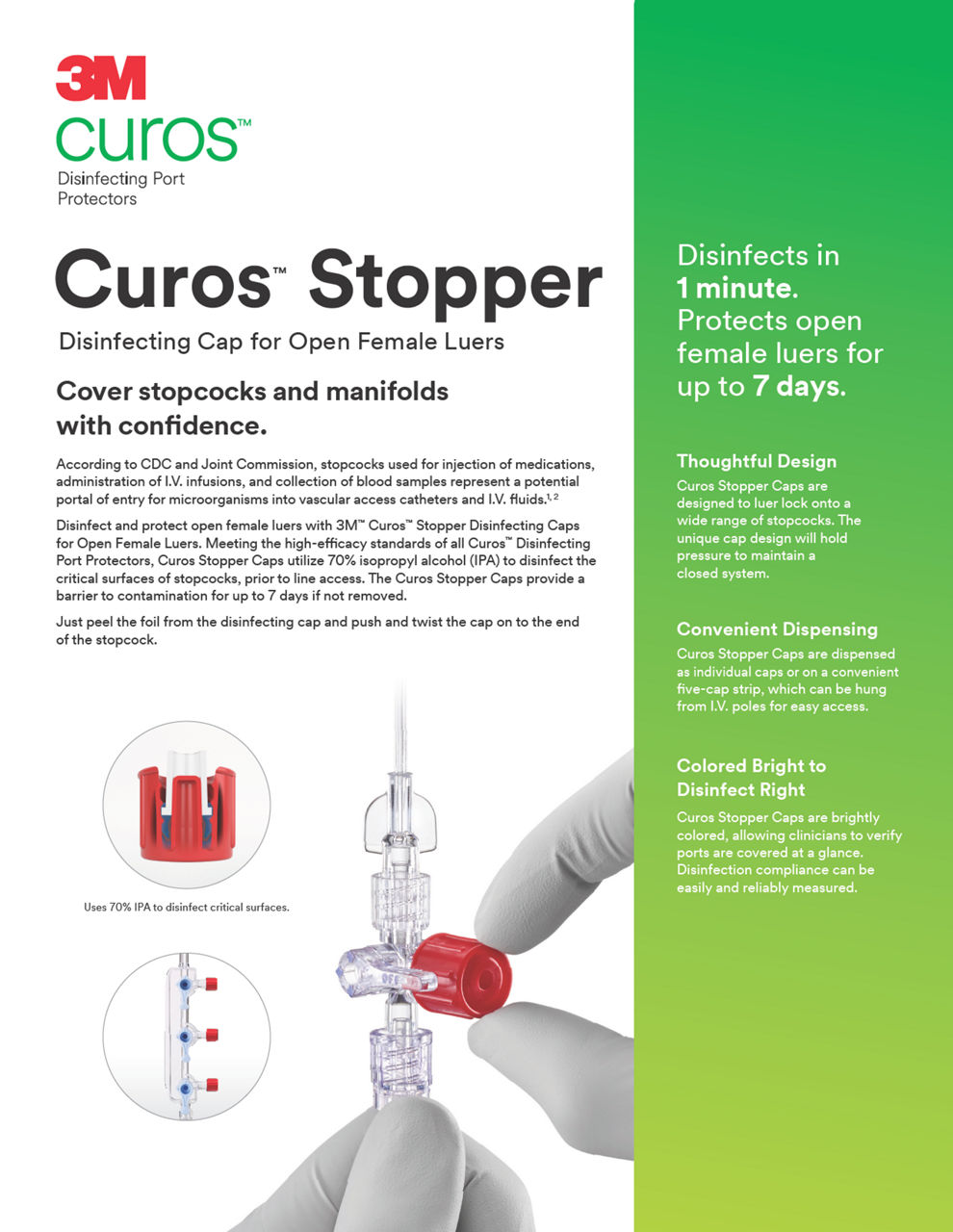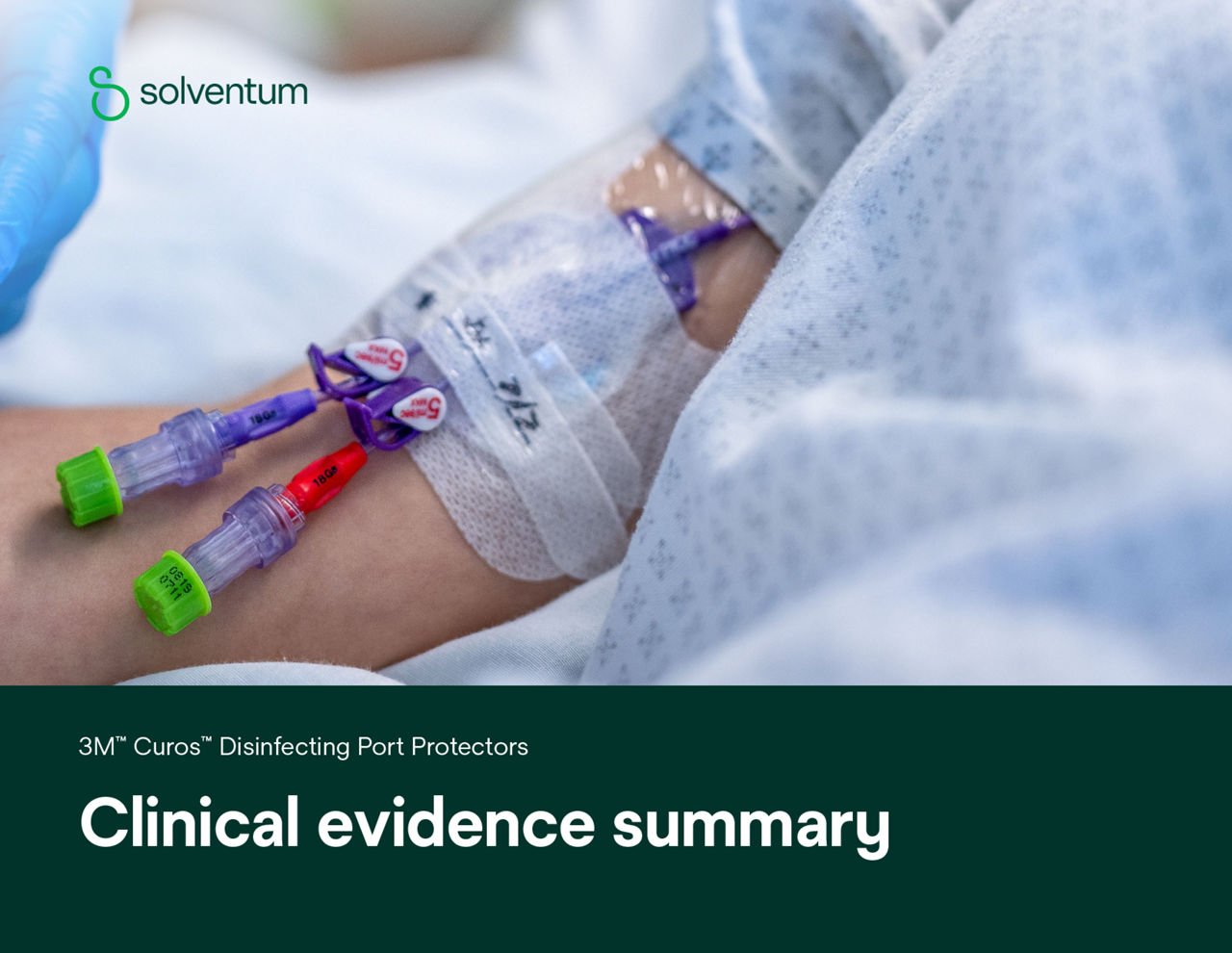Disinfecting port protectors
A full circle of disinfection and protection
3M™ Curos™ Disinfecting Port Protectors are alcohol-containing caps that twist onto IV access points for disinfection and protection. Consistent use of Curos disinfecting caps on IV needleless connectors is associated with decreased central
line-associated bloodstream infections (CLABSIs).
Curos disinfecting port protectors are the only brand on the market that has offerings to help reduce risks across all IV access points, so you can protect every line, every time.
Add the entire family of Curos disinfecting port protectors into your standard protocols. One hospital saw their rate of CLABSI decreased by more than 40% after implementing Curos disinfecting caps for needleless connectors.¹
How Curos disinfecting port protectors work:
- Reduces the risk across all intraluminal access points
- Contains 70% isopropyl alcohol (IPA) — the IPA bathes the surfaces of the port
- Disinfects in 1 minute and protects for up to 7 days if not removed
- Twists and stays on. Single use only.
Advantages over scrubbing:
- Associated with increases in compliance rates compared to scrub the hub
- The bright color helps caregivers verify that a port is clean at a glance
- Provides fast passive disinfection, saving nurses valuable time compared to most scrub the hub protocols
Complete your circle with the entire family of Curos disinfecting port protectors, designed to disinfect and protect.

Every patient, every access point, every time
Curos disinfecting port protectors is the only brand on the market that has offerings to help reduce risks across all intraluminal access points.
Featured resource
See the evidence
Curos disinfecting port protectors achieved a 99.99% reduction in 6 microbes commonly associated with CLABSI*
The effectiveness of Curos disinfecting port protectors was tested in vitro against:*
- Staphylococcus aureus
- Staphylococcus epidermidis
- Escherichia coli
- Candida albicans
- Pseudomonas aeruginosa
- Candida glabrata
Study conclusion:
All test samples exceeded the minimum 4-log reduction after one minute.
3M data on file.

Stay current with the latest industry guidelines and best practices
See what many of the world’s well-regarded organizations have to say about our Curos disinfecting port protectors — the only brand to offer effective passive disinfection for all IV access points.
Curos training videos
Resources
References:
*For more information regarding organisms associated with central line–associated bloodstream infections, refer to: Sievert, D. M., Ricks, P., Edwards, J. R., Schneider, A., Patel, J., Srinivasan, A., Fridkin, S. (2013). Antimicrobial-Resistant Pathogens Associated with Healthcare-Associated Infections: Summary of Data Reported to the National Healthcare Safety Network at the Centers for Disease Control and Prevention, 2009–2010. Infection Control & Hospital Epidemiology, 34(01), 1-14. doi:10.1086/668770.
**Data reflects in vitro findings on Curos™ Disinfecting Port Protectors.
- Merrill KC, Sumner S, Linford L, Taylor C, and Macintosh C. Impact of universal disinfectant cap implementation on central line-associated bloodstream infections. American Journal of Infection Control 42 (2014) 1274–7. *See clinical evidence on pages 8–9
- 3M data on file.
- Hou Y, Griffin LP, Ertmer K, Bernatchez SF, Kärpänen TJ, Palka-Santini M. Effectiveness of disinfecting caps for intravenous access points in reducing central line-associated bloodstream infections, clinical utilization, and cost of care during COVID-19. Clinicoecon Outcomes Res. 2023;15:477-486.
- Nickel B, Gorski L, Kleidon T, Kyes A, DeVries M, Keogh S, Meyer B, Sarver MJ, Crickman R, Ong J, Clare S, Hagle ME. Infusion Therapy Standards of Practice, 9th Edition. J Infus Nurs. 2024 Jan-Feb 01;47(1S Suppl 1):S1-S285. doi: 10.1097/NAN.0000000000000532. PMID: 38211609. © 2024 Infusion Nurses Society (INS). Excerpts used by explicit permission from INS. No endorsement is implied or given.
- Buetti, N., Marschall, J., Drees, M., Fakih, M. G., Hadaway, L., Maragakis, L. L., Monsees, E., Novosad, S., O'Grady, N. P., Rupp, M. E., Wolf, J., Yokoe, D., & Mermel, L. A. (2022). Strategies to prevent central line-associated bloodstream infections in acute-care hospitals: 2022 Update. Infection control and hospital epidemiology, 43(5), 553–569. https://doi.org/10.1017/ice.2022.87
- O'grady, Naomi, Mary Alexander, Lillian Burns, E Patchen Dellinger, Jeffery Garland, Stephen Heard, Pamela Lipsett, et al. 2011. “Guidelines for the Prevention of Intravascular Catheter-Related Infections, 2011.” https://www.cdc.gov/infectioncontrol/pdf/guidelines/bsi-guidelines-H.pdf.











